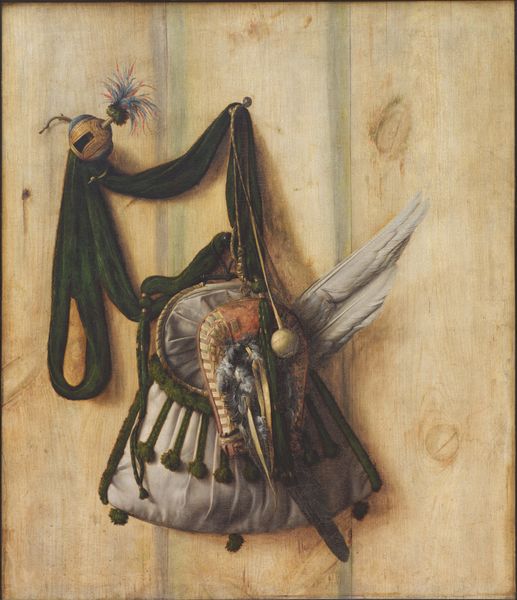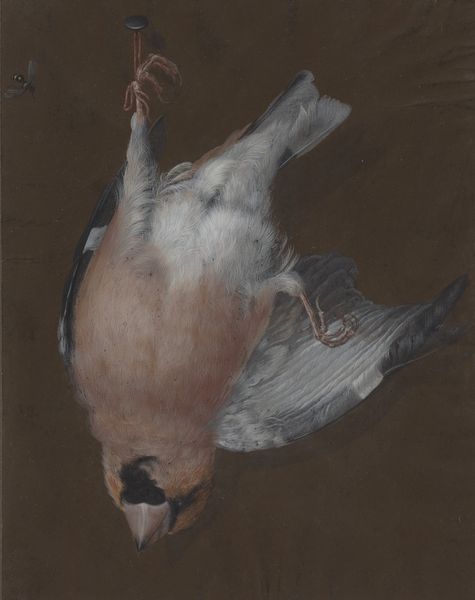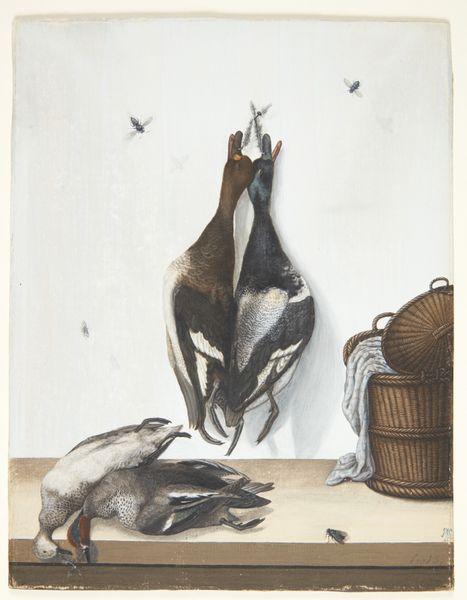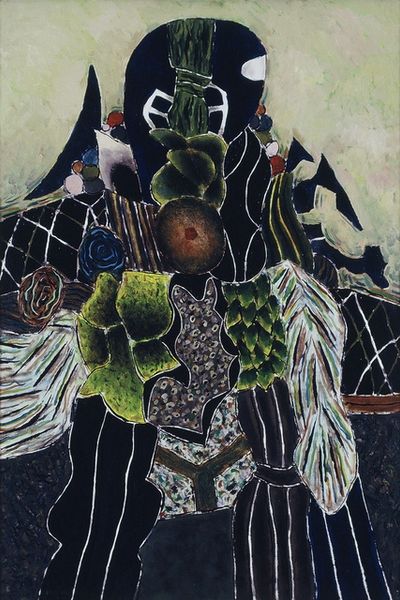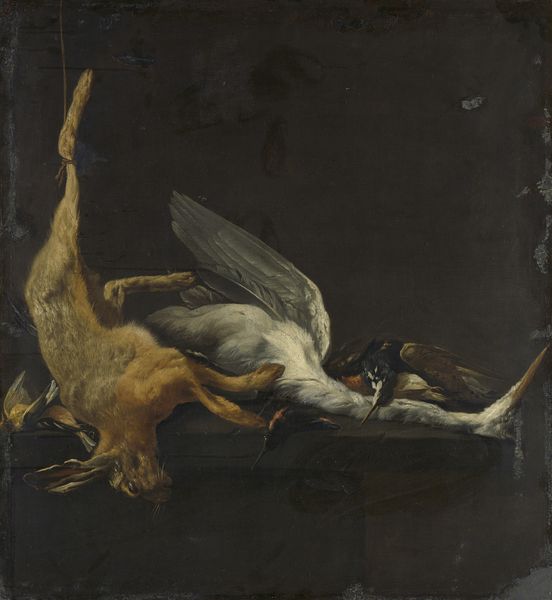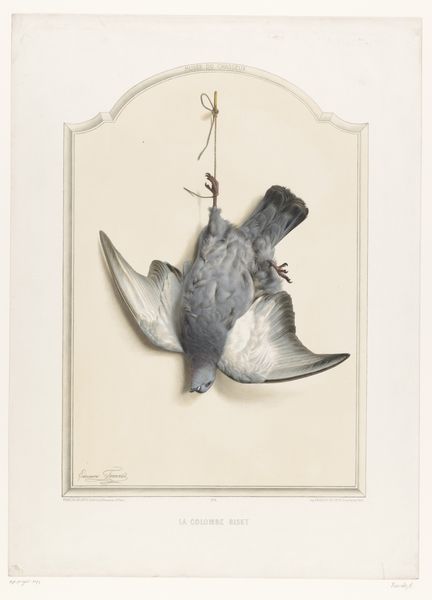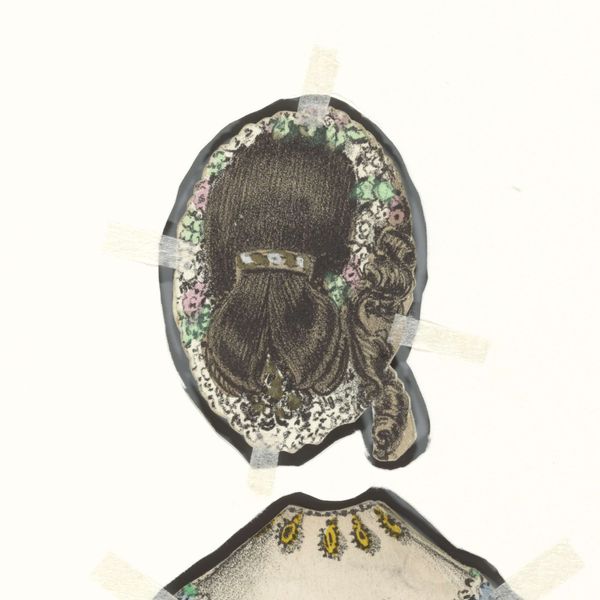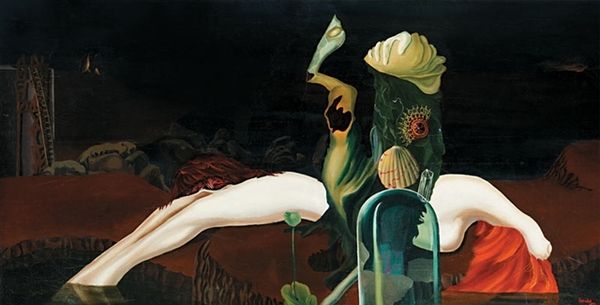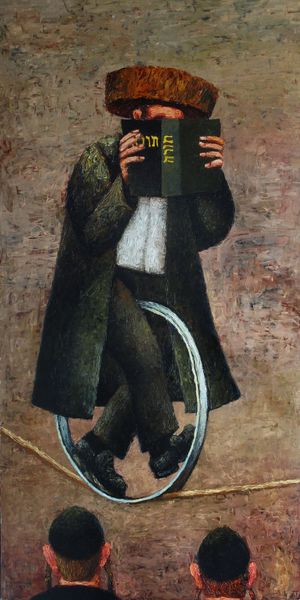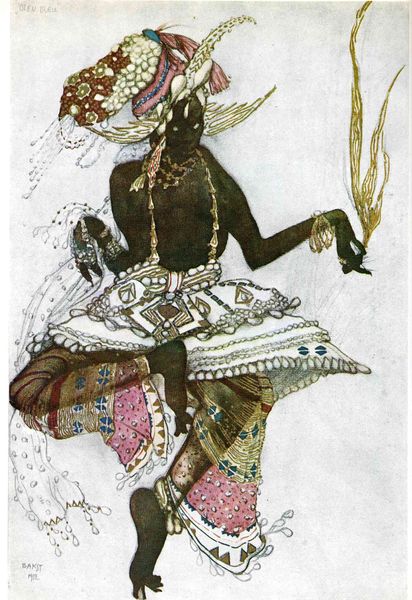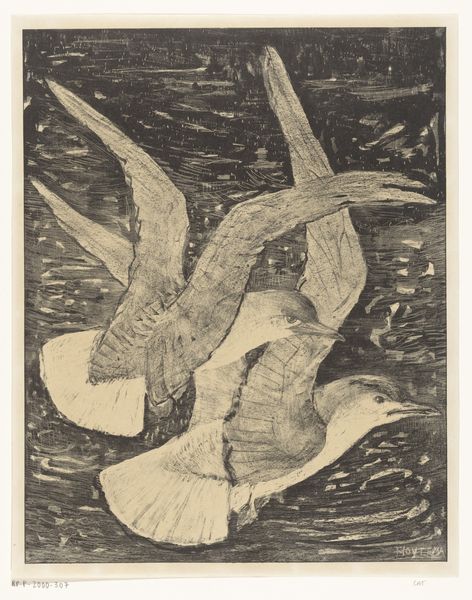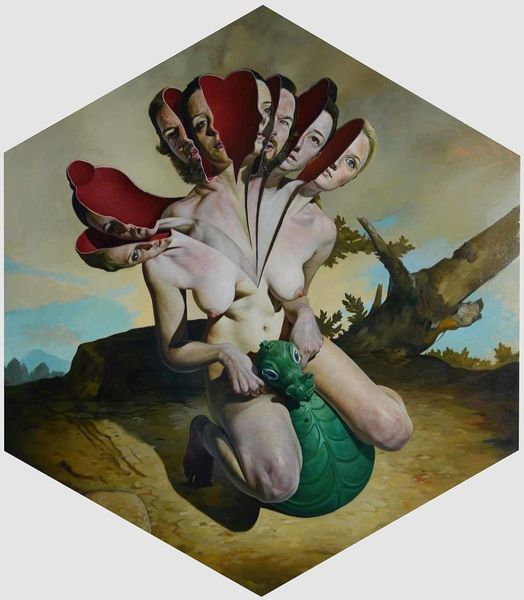
Trompe l'Oeil with Dead Duck and Hunting Implements 1670 - 1674
0:00
0:00
painting, oil-paint, canvas
#
baroque
#
painting
#
oil-paint
#
painted
#
canvas
#
underpainting
#
genre-painting
#
trompe-l'oeil
Dimensions: 114.3 cm (height) x 66.8 cm (width) (Netto), 118.3 cm (height) x 71.1 cm (width) x 5.2 cm (depth) (Brutto)
Curator: Standing before us is Cornelius Norbertus Gijsbrechts' *Trompe l'Oeil with Dead Duck and Hunting Implements*, created between 1670 and 1674. It’s an oil on canvas painting currently residing here at the SMK. What's your initial response to this curious composition? Editor: Stark and unsettling. The muted palette against what looks like bare wood creates an environment that feels devoid of life beyond the presented kill. The duck's limp pose and the severe weapons imply a particular dominance of nature, echoing hierarchical power dynamics present in 17th-century Dutch society. Curator: The illusionistic “fool the eye” effect, or *trompe l'oeil*, was designed to do precisely that—disrupt our sense of reality. Beyond simple deception, though, I think Gijsbrechts engages us with a longstanding symbolic connection between the hunt and mortality, placing both the weaponry and fallen game front and center as symbols of the impermanence of existence, as constant reminders of "memento mori." Editor: Exactly. We must consider how hunting culture bolstered elite masculinity during the Dutch Golden Age, visually constructing the self through conquest of natural, feminized domains. It's telling that these tools and their violent utility hang right beside the dead duck; together they articulate a visual program of gendered domination—nature subdued and made ready for appropriation and patriarchal control. Curator: And the way he layers objects--almost haphazardly--evokes a feeling of abundance but also reflects the era's complex relationship with material wealth and societal stratification. Every single element carries symbolic meaning, connecting hunting traditions and philosophical thought to the ruling elite. Editor: Gijsbrechts' meticulous depiction seems designed not just to showcase elite pastimes but to reinforce the power dynamics integral to these activities, which served as displays of economic and social power that excluded marginalized communities. So much of the Baroque celebrated displays of the aristocracy, after all. Curator: It really gets you pondering about this very intersection, doesn't it? Looking at this artwork certainly highlights not only mastery of painting but illuminates historical structures that we are able to examine. Editor: Agreed. It serves as a constant, if discomforting, testament to art’s complicated capacity to mirror societal complexities and imbalances.
Comments
No comments
Be the first to comment and join the conversation on the ultimate creative platform.
